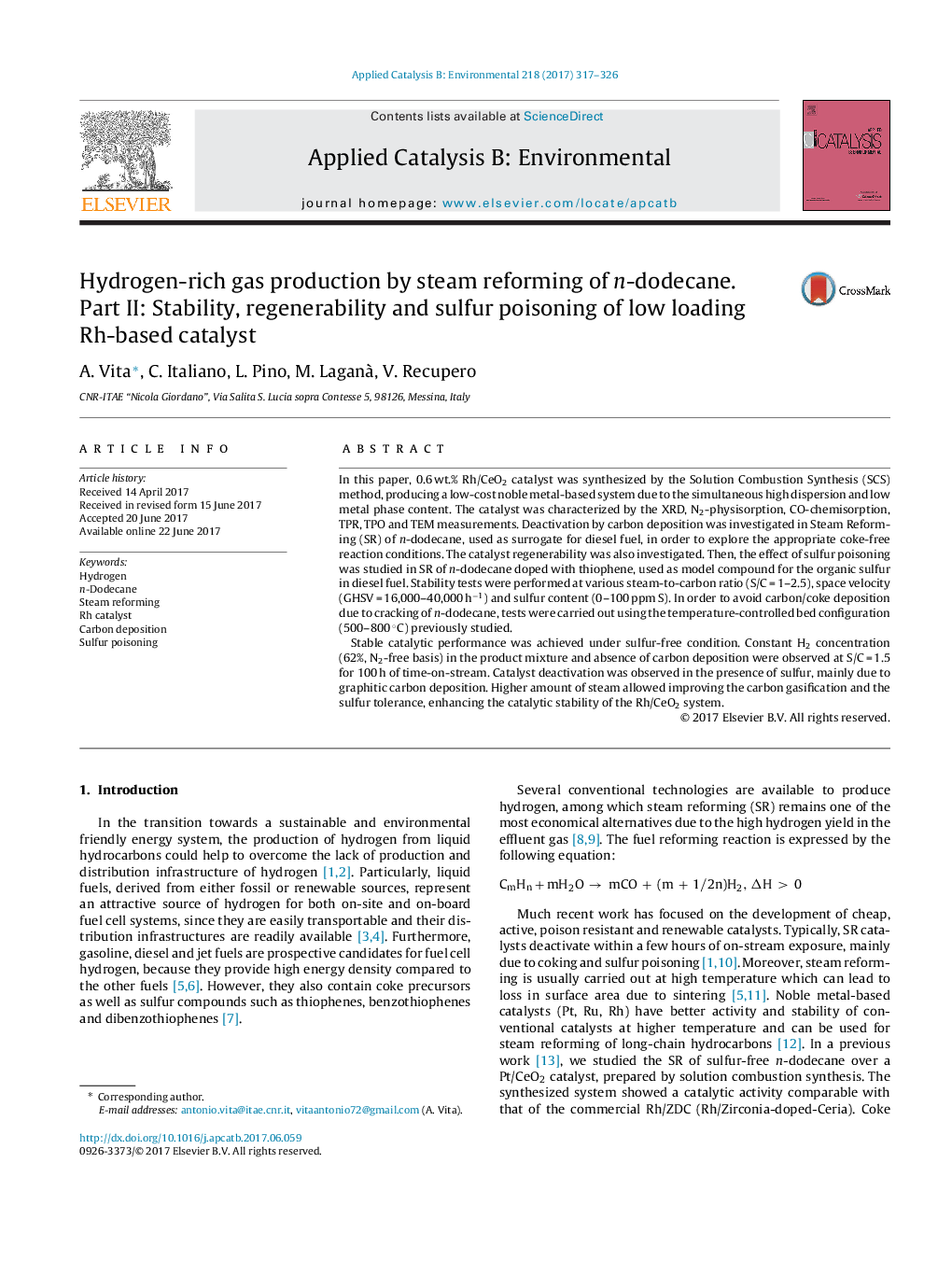| کد مقاله | کد نشریه | سال انتشار | مقاله انگلیسی | نسخه تمام متن |
|---|---|---|---|---|
| 6453746 | 1418802 | 2017 | 10 صفحه PDF | دانلود رایگان |

- Low-loading and high-dispersed Rh/CeO2 solution-combustion-synthesized catalyst.
- High and stable catalytic activity towards SR of n-dodecane.
- Full catalyst regeneration under successive deactivation/regeneration cycles.
- Catalyst deactivation in the presence of sulfur mainly due to graphitic carbon deposition.
- Improved carbon gasification and sulfur resistance at higher steam content.
In this paper, 0.6 wt.% Rh/CeO2 catalyst was synthesized by the Solution Combustion Synthesis (SCS) method, producing a low-cost noble metal-based system due to the simultaneous high dispersion and low metal phase content. The catalyst was characterized by the XRD, N2-physisorption, CO-chemisorption, TPR, TPO and TEM measurements. Deactivation by carbon deposition was investigated in Steam Reforming (SR) of n-dodecane, used as surrogate for diesel fuel, in order to explore the appropriate coke-free reaction conditions. The catalyst regenerability was also investigated. Then, the effect of sulfur poisoning was studied in SR of n-dodecane doped with thiophene, used as model compound for the organic sulfur in diesel fuel. Stability tests were performed at various steam-to-carbon ratio (S/C = 1-2.5), space velocity (GHSV = 16,000-40,000 h-1) and sulfur content (0-100 ppm S). In order to avoid carbon/coke deposition due to cracking of n-dodecane, tests were carried out using the temperature-controlled bed configuration (500-800 °C) previously studied.Stable catalytic performance was achieved under sulfur-free condition. Constant H2 concentration (62%, N2-free basis) in the product mixture and absence of carbon deposition were observed at S/C = 1.5 for 100 h of time-on-stream. Catalyst deactivation was observed in the presence of sulfur, mainly due to graphitic carbon deposition. Higher amount of steam allowed improving the carbon gasification and the sulfur tolerance, enhancing the catalytic stability of the Rh/CeO2 system.
221
Journal: Applied Catalysis B: Environmental - Volume 218, 5 December 2017, Pages 317-326